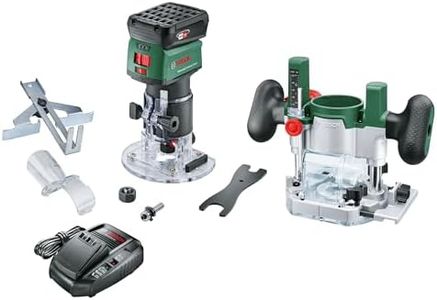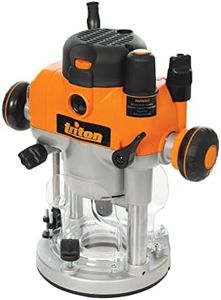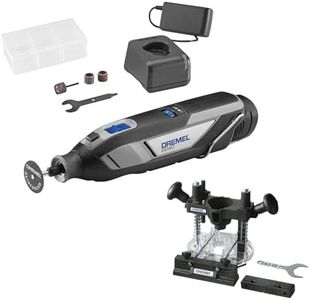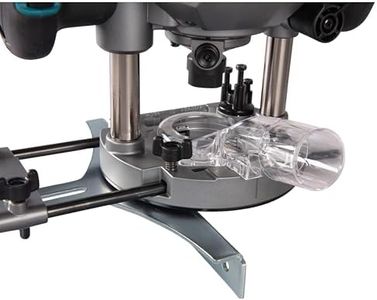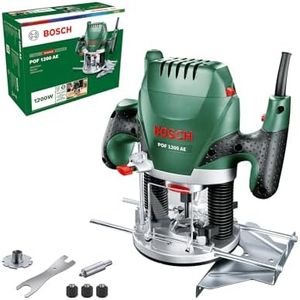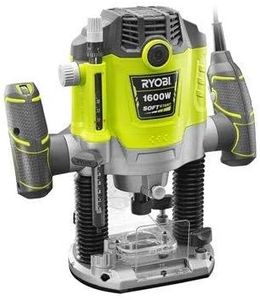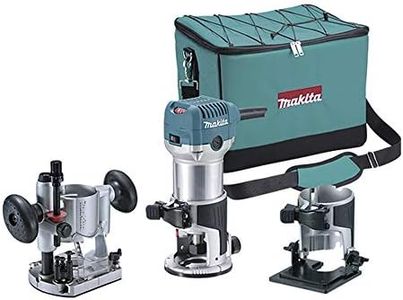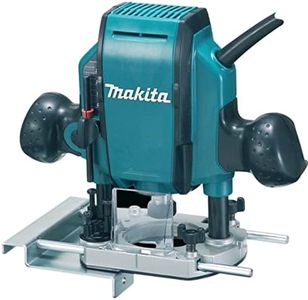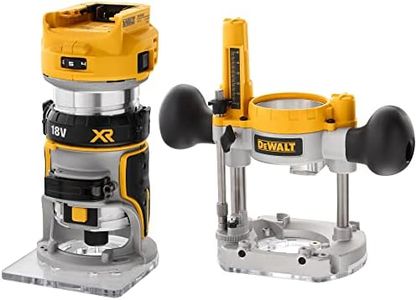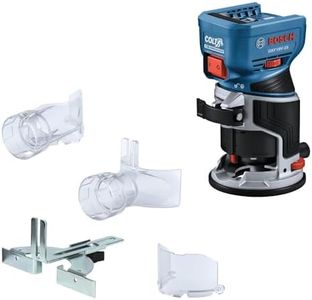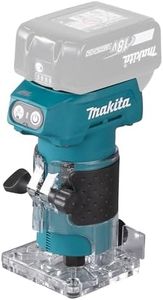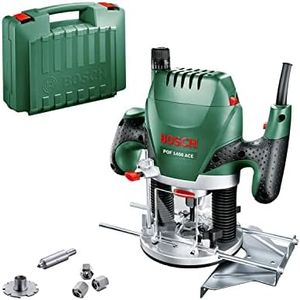We Use CookiesWe use cookies to enhance the security, performance,
functionality and for analytical and promotional activities. By continuing to browse this site you
are agreeing to our privacy policy
10 Best Plunge Routers
From leading brands and best sellers available on the web.By clicking on a link to a third party's website, log data is shared with that third party.
Buying Guide for the Best Plunge Routers
Choosing the right plunge router is all about matching the tool’s features and performance to the projects you plan to do. Plunge routers are used for cutting, shaping, and hollowing out areas in wood, making them excellent for tasks like cabinetry, joinery, and decorative work. When picking a plunge router, it’s important to focus on the specs that will affect how it performs in your hands, the types of materials you’ll use, and the complexity of your projects. Understanding what each specification means and how it translates to real-world use will help make your buying decision much easier.Power (Motor Amperage or Wattage)The power of a plunge router is usually described in amps (for corded models) or watts. This spec tells you how strong the motor is and how easily it can handle tough materials. Lower-powered routers are generally between 1.25 and 1.75 horsepower and are lighter, suitable for lighter jobs like trimming and edge work. Medium power (around 2 to 2.25 horsepower) is a good general-purpose choice for most woodworking needs. Heavy-duty routers with more than 2.5 horsepower are designed for larger cuts and hardwoods. To choose the right power level, think about what types of jobs you’ll do most—fine detail work thrives on lower power, while deeper cuts or tougher woods need more muscle.
Plunge DepthPlunge depth refers to how far the router bit can move into the material. This is an important feature because some tasks need only shallow plunges, while others require deep cuts. Routers typically have a plunge depth range between 1.5 and 3 inches. If your work involves intricate surface designs, a shallower plunge may suffice. For mortises, inlays, or larger material removal, look for a router with a greater plunge capacity. When choosing, estimate the thickest material you’ll need to rout and pick a model that can comfortably handle it.
Collet SizeThe collet size determines the diameter of router bits you can use. The common sizes are 1/4 inch and 1/2 inch. A 1/4-inch collet fits smaller bits, making it ideal for lighter, more intricate tasks. A 1/2-inch collet is sturdier and can handle larger, more demanding bits, providing greater stability and less vibration. Some routers come with adapters so you can use both sizes. If you plan to do a variety of woodworking, flexibility is key—a model that accepts both sizes can adapt to a wider range of tasks.
Variable Speed ControlVariable speed lets you adjust how fast the router bit spins. High speeds are ideal for small bits and soft woods, while larger bits or tougher materials need slower speeds to prevent burning and ensure safety. Routers may have a simple low/high switch or a dial with a wide speed range. For users who need precision and will work with different types or sizes of bits, having variable speed gives you greater control and a cleaner finish.
Ergonomics and WeightErgonomics refers to how comfortable and balanced the router feels in your hands, and the overall design of the handles and controls. Weight affects how easy the router is to maneuver, especially during detailed work. Lighter routers can be more comfortable for overhead or extended use, while heavier ones provide greater stability when making deep cuts. Think about your typical project duration and whether comfort or stability is more important for you, then choose accordingly.
Dust CollectionDust collection is all about how well the router can manage wood chips and sawdust. Some plunge routers come with built-in ports or attachments for connecting a vacuum hose, which keeps your work area cleaner and maintains better visibility. This is particularly useful in indoor workshops or when working with materials that create irritating dust. If a clean workspace is important to you, or you need to protect your lungs, look for models with efficient dust collection features.
Depth Adjustment SystemThe depth adjustment mechanism determines how precisely you can control the depth of the plunge. Systems range from simple knobs to micro-adjustment features that allow fine-tuning. If you often need exact depths for joinery or repeated cuts, a router with a micro-adjustable or rack-and-pinion system will save you time and provide better accuracy. For straightforward, occasional use, a basic depth stop may be sufficient.
